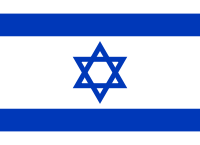Israel Railways
| Israel Railways | |
|---|---|
| Locale | Israel |
| Dates of operation | 1948–present |
| Track gauge | 4 ft 8 1⁄2 in (1,435 mm) (standard gauge) |
| Website | www.rail.co.il/en |
Israel Railways (Hebrew: רַכֶּבֶת יִשְׂרָאֵל, Rakevet Yisra'el) is Israel's government-owned national railway company and is responsible for all inter-city and suburban railway passenger and freight traffic in the country. All its lines are standard gauge. The network is centered in Israel's densely populated coastal plain from where lines radiate out from in many directions. Unlike road vehicles, Israeli trains run on the left side of the tracks.
Contents |
Lines
Plans are to divide Israel Railways' passenger routes into eight operational lines:
| Terminus (north) | Intermediate stations | Terminus (south) | Major destinations |
|---|---|---|---|
| Nahariya | Akko - Kiryat Motzkin - Kiryat Haim - Hutzot HaMifratz - Lev HaMifratz - Haifa Center - Haifa Bat Galim - Haifa Hof HaCarmel - Atlit - Binyamina - Tel Aviv University - Tel Aviv Savidor Central Railway Station - Tel Aviv HaShalom - Tel Aviv HaHagana - Lod - Kiryat Gat - Lehavim - Beersheba North | Beersheba Center | Nahariya - Akko - HaKrayot - Haifa - Atlit - Binyamina-Giv'at Ada / Or Akiva - Tel Aviv / Ramat Gan - Lod - Kiryat Gat - Lehavim / Rahat - Beersheba |
| Kiryat Motzkin | Kiryat Haim - Hutzot HaMifratz - Lev HaMifratz - Haifa Center - Haifa Bat Galim | Haifa Hof HaCarmel | HaKrayot - Haifa |
| Binyamina | Caesarea-Pardes Hanna - Hadera Ma'arav - Netanya - Beit Yehoshua - Herzliya - Tel Aviv University - Tel Aviv Savidor Central Railway Station - Tel Aviv HaShalom - Tel Aviv HaHagana - Kfar Habad - Lod - Be'er Ya'akov - Rehovot - Yavne - Ashdod | Ashkelon | Binyamina / Or Akiva - Caesarea Industrial Zone / Pardes Hanna-Karkur - Hadera - Beit Yehoshua / Even Yehuda - Herzliya - Tel Aviv / Ramat Gan - Kfar Habad - Lod - Be'er Ya'akov - Rehovot / Ness Ziona - Yavne - Ashdod - Ashkelon / Kfar Silver |
| Hod Hasharon | Kfar Saba - Rosh HaAyin Tzafon - Petah Tikva Segula - Kiryat Arye - Bnei Brak - Tel Aviv University - Tel Aviv Savidor Central Railway Station - Tel Aviv HaShalom - Tel Aviv HaHagana - Lod Ganei Aviv - Lod | Rishon LeZion HaRishonim | Kfar Sava / Hod HaSharon - Rosh HaAyin / Neve Yerek - Petah Tikva - Bnei Brak / Ramat Gan - Tel Aviv - Lod - Rishon LeZion / Ness Ziona |
| Tel Aviv Savidor Central Railway Station | Tel Aviv HaShalom - Tel Aviv HaHagana - Lod - Ramla - Beit Shemesh - Biblical Zoo | Jerusalem Malha | Tel Aviv / Ramat Gan - Lod - Ramla - Beit Shemesh - Jerusalem |
| Tel Aviv Savidor Central Railway Station | Tel Aviv HaShalom - Tel Aviv HaHagana - Lod - Kiryat Gat - Lehavim Center - Beersheba North | Beersheba Center | Tel Aviv / Ramat Gan - Lod - Kiryat Gat - Lehavim / Rahat - Beersheba |
| Beersheba North | Dimona | Beersheba - Dimona | |
| Tel Aviv Savidor Central Railway Station | Ben Gurion Airport - Paatei Modi'in | Modi'in Central | Tel Aviv - Modi'in-Maccabim-Re'ut |
Track
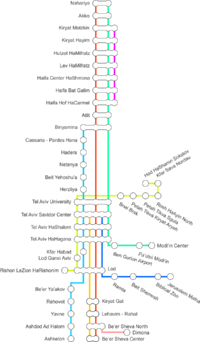
As for the physical railway network, one railway line extends north from Tel Aviv along the coast, reaching Haifa, the Kerayot, and Nahariya. Another goes south to Beersheba with a new spur from the Be'er Sheva North Station to Dimona, which opened on December 17, 2005. There are future plans to extend the Beersheba-Dimona line to the Red Sea port of Eilat.
Another line goes south to Ashkelon with a spur to Rishon LeZion. This line was extended from Ashdod to Ashkelon in April 2005. Another line goes East to Kfar Sava Nordau station with an extension to Hod HaSharon (Sokolov St) opening on 2 September 2006.
Service on the line to Jerusalem, which opened in 1892, was suspended in 1998 due to the poor state of the track. It was reopened in stages starting five years later, after extensive renovations. The section of this line to Beit Shemesh re-opened in September 2003, while the remainder of the upgraded line to Jerusalem opened in April 2005 together with the opening of the new Jerusalem Malha Station in Southern Jerusalem, instead of the original Khan Station.[1] In October 2004, a new line was opened from Tel Aviv to the new Terminal 3 at Ben Gurion International Airport. The line was extended to Modi'in in September 2007. Another branch of this railway currently under construction will continue as a high-speed railway to Jerusalem. This difficult-to-construct line will be electrified and make extensive use of long railway tunnels in order for trains to achieve high speeds as they make their way from the coastal region to the mountainous Jerusalem area. In its first phase this line will terminate at a new underground station under construction underneath the Jerusalem Central Bus Station in central Jerusalem. There are future plans to extend the line from the Jerusalem Central Bus Station so that it will connect with the (now upgraded) historic railroad that already reaches Southern Jerusalem. The ride on the new high-speed line from Tel Aviv to Jerusalem Center will take approximately 30–40 minutes (compared to the current service which reaches the less-centrally located station in Southern Jerusalem in 95–100 minutes). The line is expected to be finished sometime around 2016.
Expansion plans
Initial plan (2003-2011)


Israel Railways traces its roots to the railway lines built by the Ottoman and British authorities. For many years the system lay under-utilized and in disrepair. However, in recent years Israel Railways has undertaken an ambitious multi-billion shekel expansion program (the sum invested between 2003 and 2011 is equivalent to about USD $6.5 billion). This program calls for large sums to be invested in reviving abandoned railways, refurbishing and upgrading existing lines, and the construction of major brand new lines, as well as planning for the electrification of much of the system and the purchase of new rolling stock.
Besides the aforementioned high-speed Tel Aviv to Modi'in/Jerusalem line, other new lines are currently approved or under construction. One is the revival of the long-defunct Jezreel Valley line from Haifa to Beit She'an (originally a branch of the famed Hejaz railway) with a planned connection across the Jordan River into Jordan. A new line is being constructed from Tel Aviv to Ashdod via the southern Tel Aviv suburbs of Holon, Bat Yam, Rishon LeZion and Yavne (west) as an extension of the existing Coastal railway line. Another new line will be built to connect Ashkelon with Be'er Sheva via the southern development towns in the western Negev (Netivot, Ofakim and Sderot). It was also planned to build a new line from Acre to Karmiel, although this has been moved to the follow-up plan. Also, the existing congested line to Beersheba is currently undergoing upgrades to high-speed, dual-track configuration.
Between 2008 and 2011, new rolling stock is expected to arrive from the German company Siemens. The purchase includes 6 engine cars and 87 regular passenger cars.[2] 30 new Bombardier Double-deck Coach cars are also expected to arrive in 2008.
Follow-up plan
The next expansion plan of Israel Railways, which will take place starting in 2012, calls for several expansions and additions:
- A new line from Acre to Kiryat Shmona via Karmiel (was originally planned to be completed in 2008, but met numerous obstacles and was postponed).[3]
- A new line from Beersheba to Arad, via Nevatim and Hura. This line is planned to connect to a future line to Eilat and the Dead Sea.
- Reconstruction of the old eastern line, from Rosh HaAyin to eastern Hadera
- A new line from Rosh HaAyin to Ariel
- A new branch from the line to Kfar Sava, which will reach the Petah Tikva Central Bus Station, and connect to the Tel Aviv Light Rail
Electrification
Currently Israel Railways relies solely on diesel locomotives and DMUs. In the spring of 2010, the government of Israel voted to appropriate the sum of NIS11.2 Billion (US$3 billion) to implement the first phase of Israel Railways' electrification programme. This phase includes electrifying 420km of railways using 25 kV 50Hz AC and the construction of 14 transformer stations, plus the purchase of electric rolling stock. At the time however, some of the statutory permitting process for this effort had yet to be completed and therefore it is uncertain when construction will begin. Currently the maximum speed on the national rail network is limited to 150km/h (though this is expected to rise to 160km/h by 2013); as part of the electrification project, portions of the network will be designed to allow operation at speeds of up to 200km/h.
Proposed rail lines to the PA
Talks between Israel and the Palestinian Authority in 2004 have raised the possibility of reviving the old line from the Gaza Strip to Tulkarm and/or building a new line from Gaza to Tarkumia (near Hebron) with the aim of securely transporting people and goods between Gaza and the West Bank through Israeli territory as well as for transporting cargo to and from the Israeli port of Ashdod destined to the Palestinian Authority.[4] Another proposed line would involve the revival of the old Hejaz railway branch from Afula to Jenin.
Old railway links to other countries
Originally part of the Palestine Railway, a line linked Al Qantarah El Sharqiyya north of the Suez Canal in Egypt, skirting the Mediterranean northward to the port of Tripoli, Lebanon. In 1912, the French had built an extension of the Baghdad Railway south from Aleppo, Syria, to connect at Tripoli, Lebanon. Expanded during World War II by both Australian and later New Zealand engineers, the effective footprint extended as far as Damascus.
For a railway both created and effected by the logistical need of military engineers supporting a various war efforts, on the establishment of the State of Israel in 1948 and the outbreak of hostilities during the Israeli War of Independence, those connections were severed and have yet to be restored.
Israeli forces bombed the rail bridge on the way to Lebanon, and the remnants of this line can be seen at Rosh HaNikra grottoes, where a virtual "train ride to peace" movie is shown inside the sealed tunnel that used to go into Lebanon. The tracks used to continue from Rosh HaNikra to Nahariya (the current northern end of the line) making it possible for one to travel from Lebanon all the way to Tel Aviv, Cairo, and beyond. Northerly, there was a route to Syria and connection via Chemins de Fer Syriens to Damascus.
Current railway links with adjacent countries
 Lebanon – defunct
Lebanon – defunct Syria – defunct (narrow gauge)
Syria – defunct (narrow gauge)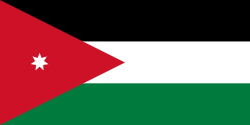 Jordan – proposed
Jordan – proposed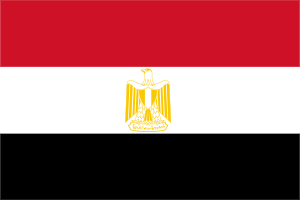 Egypt – defunct
Egypt – defunct
Passenger traffic
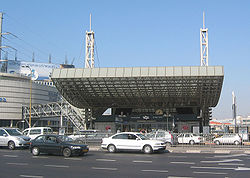
In the first years after the state's establishment in 1948, passenger traffic grew rapidly, reaching about 4.5 million passengers per annum during the early-to-mid 1960s, at which point traffic began to slacken due to improvements in the road infrastructure, increases in the automobile ownership rate, lack of investment in the rail network, and a continued favoring of public transportation using buses over trains. This trend reached a low point of about 2.5 million passengers in 1990, which on a per-capita basis represented about a 75% decrease from heyday of the 1960s. The heavy investments in the rail infrastructure beginning in the early-to-mid 90s made train travel more appealing, especially given the ever-increasing road congestion and consequently passenger use began rising rapidly — by a factor of about fivefold over any given ten year span beginning in 1990, a trend which has been continuing to the present day. With several large-scale railway infrastructure projects still underway and more planned in the future, the growth in passenger numbers is expected to continue.
Statistics
| Year | Passengers (millions)[5][6] | Major events[6] |
|---|---|---|
| 1996 | 5.1 |
|
| 1997 | 5.6 | |
| 1998 | 6.4 |
|
| 1999 | 8.8 |
|
| 2000 | 12.7 |
|
| 2001 | 15.1[2] |
|
| 2002 | 17.5 |
|
| 2003 | 19.8 |
|
| 2004 | 22.9 |
|
| 2005 | 26.8 |
|
| 2006 | 28.4 | |
| 2007 | 31.8[2] |
|
| 2008 | 35.1[7] |
|
| 2009 | 35.9[7] |
Israel Railways passenger stations
| Name | Hebrew | City | Lines |
|---|---|---|---|
| Acre | עכו | Acre | Nahariya - Be'er Sheva Center Nahariya - Modi'in |
| Ashdod Ad Halom Ashdod South |
אשדוד עד הלום אשדוד דרום |
Ashdod | Binyamina - Ashkelon |
| Ashkelon | אשקלון | Ashkelon | Binyamina - Ashkelon |
| Atlit | עתלית | Atlit | Nahariya - Be'er Sheva Center Nahariya - Modi'in |
| Be'er Sheva Center | באר שבע מרכז | Beersheba | Nahariya - Be'er Sheva Center Tel Aviv Central - Be'er Sheva Center |
| Be'er Sheva North University |
באר שבע צפון אוניברסיטה |
Beersheba | Nahariya - Be'er Sheva Center Tel Aviv Central - Be'er Sheva Center Be'er Sheva North - Dimona |
| Be'er Ya'akov | באר יעקב | Be'er Ya'akov | Binyamina - Ashkelon |
| Ben Gurion Airport | נמל תעופה בן גוריון | Ben Gurion International Airport | Nahariya - Modi'in |
| Beit Shemesh | בית שמש | Beit Shemesh | Tel Aviv Central - Jerusalem Malha |
| Beit Yehoshua | בית יהושע | Beit Yehoshua | Binyamina - Ashkelon |
| Biblical Zoo | גן החיות התנ"כי | Jerusalem | Tel Aviv Central - Jerusalem Malha |
| Binyamina | בנימינה | Binyamina-Giv'at Ada | Binyamina - Ashkelon Nahariya - Be'er Sheva Center Nahariya - Modi'in |
| Bnei Brak | בני ברק | Bnei Brak / Ramat Gan | Hod Hasharon Sokolov - HaRishonim |
| Caesarea-Pardes Hanna | קיסריה-פרדס חנה | Pardes Hanna-Karkur Caesarea Industrial Zone |
Binyamina - Ashkelon |
| Dimona | דימונה | Dimona | Be'er Sheva North - Dimona |
| Hadera West | חדרה מערב | Hadera | Binyamina - Ashkelon |
| Haifa Bat Galim | חיפה בת גלים | Haifa | Nahariya - Be'er Sheva Center Nahariya - Modi'in Haifa Hof HaCarmel - Kiryat Motzkin |
| Haifa Hof HaCarmel | חיפה חוף הכרמל | Haifa | Nahariya - Be'er Sheva Center Nahariya - Modi'in Haifa Hof HaCarmel - Kiryat Motzkin |
| Haifa Central | חיפה מרכז | Haifa | Nahariya - Be'er Sheva Center Nahariya - Modi'in Haifa Hof HaCarmel - Kiryat Motzkin |
| Herzliya | הרצליה | Herzliya | Binyamina - Ashkelon |
| Hod HaSharon Sokolov (Kfar Sava) |
הוד השרון סוקולוב כפר סבא |
Hod HaSharon / Kfar Saba | Hod Hasharon Sokolov - HaRishonim |
| Hutzot HaMifratz | חוצות המפרץ | Haifa | Nahariya - Be'er Sheva Center Nahariya - Modi'in Haifa Hof HaCarmel - Kiryat Motzkin |
| Jerusalem Malha | ירושלים מלחה | Jerusalem | Tel Aviv Central - Jerusalem Malha |
| Kfar Habad | כפר חב"ד | Kfar Habad | Binyamina - Ashkelon |
| Kfar Saba – Nordau (Hod HaSharon) |
כפר סבא נורדאו הוד השרון |
Kfar Saba / Hod HaSharon | Hod Hasharon Sokolov - HaRishonim |
| Kiryat Gat | קרית גת | Kiryat Gat | Nahariya - Be'er Sheva Center Tel Aviv Central - Be'er Sheva Center |
| Kiryat Haim | קריית חיים | Haifa (Kiryat Haim) | Nahariya - Be'er Sheva Center Nahariya - Modi'in Haifa Hof HaCarmel - Kiryat Motzkin |
| Kiryat Motzkin | קריית מוצקין | Haifa (Kiryat Shmuel) Kiryat Motzkin |
Nahariya - Be'er Sheva Center Nahariya - Modi'in Haifa Hof HaCarmel - Kiryat Motzkin |
| Lehavim Rahat | להבים רהט | Lehavim | Nahariya - Be'er Sheva Center Tel Aviv Central - Be'er Sheva Center |
| Lev HaMifratz | לב המפרץ | Haifa | Nahariya - Be'er Sheva Center Nahariya - Modi'in Haifa Hof HaCarmel - Kiryat Motzkin |
| Lod | לוד | Lod | Binyamina - Ashkelon Nahariya - Be'er Sheva Center Tel Aviv Central - Be'er Sheva Center Hod Hasharon Sokolov - HaRishonim |
| Lod Ganei Aviv | לוד גני אביב | Lod | Hod Hasharon Sokolov - HaRishonim |
| Modi'in Central | מודיעין מרכז | Modi'in | Nahariya - Modi'in |
| Nahariya | נהריה | Nahariya | Nahariya - Be'er Sheva Center Nahariya - Modi'in |
| Netanya | נתניה | Netanya | Binyamina - Ashkelon |
| Paatei Modi'in | פאתי מודיעין | Modi'in | Nahariya - Modi'in |
| Petah Tikva Kiryat Arye | פתח תקווה קרית אריה | Petah Tikva | Hod Hasharon Sokolov - HaRishonim |
| Petah Tikva Segula | פתח תקווה סגולה | Petah Tikva | Hod Hasharon Sokolov - HaRishonim |
| Ramla | רמלה | Ramla | Tel Aviv Central - Jerusalem Malha |
| Rehovot | רחובות | Rehovot | Binyamina - Ashkelon |
| Rishon LeZion HaRishonim | ראשון לציון הראשונים | Rishon LeZion | Hod Hasharon Sokolov - HaRishonim |
| Rosh HaAyin Tzafon | ראש העין צפון | Rosh HaAyin / Neve Yerek | Hod Hasharon Sokolov - HaRishonim |
| Tel Aviv HaHagana | תל אביב ההגנה | Tel Aviv | Binyamina - Ashkelon Nahariya - Be'er Sheva Center Tel Aviv Central - Be'er Sheva Center Nahariya - Modi'in Hod Hasharon Sokolov - HaRishonim |
| Tel Aviv HaShalom | תל אביב השלום | Tel Aviv | Binyamina - Ashkelon Nahariya - Be'er Sheva Center Nahariya - Modi'in Tel Aviv Central - Be'er Sheva Center Hod Hasharon Sokolov - HaRishonim |
| Tel Aviv Central Savidor |
תל אביב מרכז סבידור |
Tel Aviv / Ramat Gan | Binyamina - Ashkelon Nahariya - Be'er Sheva Center Nahariya - Modi'in Tel Aviv Central - Be'er Sheva Center Hod Hasharon Sokolov - HaRishonim |
| Tel Aviv University Convention Center |
תל אביב אוניברסיטה מרכז הירידים |
Tel Aviv | Binyamina - Ashkelon Nahariya - Be'er Sheva Center Nahariya - Modi'in Hod Hasharon Sokolov - HaRishonim |
| Yavne | יבנה | Yavne | Binyamina - Ashkelon |
Rolling stock
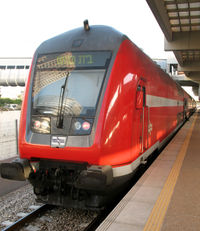
Israel Railways employs the following passenger trains and locomotives (partial list):
- Various G-series (G12, G16, G26) GM-EMD export locomotives (since 1955)
- Boris Kidrič/Metalka "Yugo" (since 1964-72)[8][9]
- ABB Scandia IC3 (since 1992)
- GEC-Alsthom PRIMA series locomotives (JT42BW and JT42CW, GM-EMD powered) (since 1996)
- Bombardier Double-deck Coach (since 2001)
- Siemens Viaggio Light (configured as "ISR SDPP train") passenger coaches[10][11] (since 2009)
Railway disasters
- In 1972, a train crashed into a military truck, killing 18 soldiers.
- On June 11, 1985, a train crashed into a bus carrying school children, killing 19 children and 3 adults, near moshav HaBonim.
- On June 21, 2005, a train crashed into a freight truck near kibbutz Revadim, killing 8 and injuring 198.[12]
- On June 12, 2006, a train crashed into a truck near Beit Yehoshua, killing 5 and injuring from 77 to over 80.[13][14]
- On December 27, 2009 a train crashed into a car near Kiryat Gat. The driver proceeded without regard to the train checkpoint on the road. The train struck his car and he was killed.[15]
- On August 5, 2010 a train crashed into a minibus near Kiryat Gat, killing 7 and injuring 6. The minibus was hit at 19:05 GMT+3 on Route 353, apparently as it tried to pass over a level crossing.[16][17]
See also
- Jaffa–Jerusalem railway
- Jezreel Valley railway
Sources
- Cotterell, Paul (1986). The Railways of Palestine and Israel. Tourret Publishing. ISBN 0-905878-04-3.
References and notes
- ↑ The old Jaffa–Jerusalem railway was originally built as narrow gauge, and was subsequently upgraded to standard gauge in the 1920s, although the serpentine mountainous route of the railbed up to Jerusalem remained an impediment to operating under modern railway standards. Several kilometers of old rails still remain on the line from the new Malha Station to the old Khan Station.
- ↑ 2.0 2.1 2.2 "CEO of Israel Railways: Punctuality is the First Priority" (in Hebrew). Ynet. 2008-02-05. http://www.ynet.co.il/articles/0,7340,L-3503058,00.html. Retrieved 2008-02-05.
- ↑ Railroad Planned from Carmiel to Kiryat Shemona Israel National News, 22 January 2008
- ↑ Forward, The Jewish Daily, article published 4 Feb 2005
- ↑ http://www.rail.co.il/HE/About/Pages/statistics.aspx
- ↑ 6.0 6.1 "Rail Transport - Israel Railways". Israeli Ministry of Transportation. pp. 132. http://www.mot.gov.il/wps/pdf/HE_PERSUMIM/TRN_Book/TRN6.pdf. Retrieved 2008-02-28.
- ↑ 7.0 7.1 "Israel Railways Statistics" (in Hebrew). Israel Railways. 2009-01-29. http://rail.co.il/HE/About/Pages/statistics.aspx. Retrieved 2009-01-29.
- ↑ "Israel Railways Passenger Trains - Details on Short Iron Carriage Types" (in Hebrew). http://www.railnewsil.com/rolling/coachlist_h_3.html. Retrieved 2008-02-15.
- ↑ "General Information - Types of Rolling Stock in Use" (in Hebrew). Israel Railways. http://www.israrail.org.il/general/equip7.html. Retrieved 2008-02-15.
- ↑ "Viaggio Light - Low-Floor Coach". Siemens. http://www.transportation.siemens.com/ts/en/pub/products/tr/services/travel/viaggio_light.htm. Retrieved 2008-10-19.
- ↑ "Siemens Israel / Mobility in Israel". Siemens. http://www.siemens.co.il/.
- ↑ Tova Dadon (2005-06-25). "Israeli train crash". Ynetnews. http://www.somethingjewish.co.uk/articles/1504_israeli_train_crash.htm. Retrieved 2007-10-03.
- ↑ Ra'anan Ben-Tzur, Oren Rice (2006-06-12). "Train accident in the Sharon region - 5 dead, dozens wounded" (in Hebrew). Ynet. http://www.ynet.co.il/articles/0,7340,L-3261798,00.html. Retrieved 2007-10-03.
- ↑ Roni Singer-Heruti (2007-03-22). "Police: Try Israel Railways head for negligence over fatal crash". Haaretz. http://www.haaretz.com/hasen/spages/840847.html. Retrieved 2007-10-03.
- ↑ Sagi Bashan (2009-12-27). "One killed in crash between train and car; Trains traffic disruptions in southern Israel" (in Hebrew). Reshet. http://reshet.ynet.co.il/חדשות/News/Domestic/internal/Article,34220.aspx.
- ↑ "Seven die in southern Israel as train hits minibus" (in English). BBC. 2010-08-04. http://www.bbc.co.uk/news/world-middle-east-10860526.
- ↑ Tova Dadon (2010-08-05). "7 killed in crash between train and minibus in southern Israel" (in Hebrew). Ynet. http://www.ynet.co.il/articles/0,7340,L-3931021,00.html.
External links
|
||||||||||||||||||||||||||||||||||||||
|
||||||||||||||||||||||||||||||||||||

